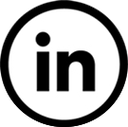
Building a Successful Career
in Cardiovascular Imaging:
Joys and Tribulations
By Omar Khalique,
MD, FACC, FSCCT, FSCMR, FSCAI, FASE
Director of Multimodality Cardiac Imaging, Structural Heart and Valve Center at Columbia University Medical Center, New York, NY.

is an Assistant Professor of Medicine and the Director of Multimodality Cardiac Imaging in the Structural Heart and Valve Center at Columbia University Medical Center, New York, NY. He has received advanced training in multimodality imaging and is board certified in Cardiovascular Diseases, Cardiovascular Computer Tomography, Cardiac Magnetic Resonance, Adult Echocardiography, and Nuclear Cardiology.
Dr. Omar Khalique
MD, FACC, FSCCT, FSCMR, FSCAI, FASE
Due to rapid accelerations in technology, cardiovascular imaging (CVI) has become one of the most rapidly evolving fields within cardiology. The New England Journal of Medicine included the development of medical imaging as one of the top 10 medical achievements of the prior millennium. Diagnosing disease states and planning complex procedures based on advanced cardiac imaging techniques is a truly rewarding and fascinating endeavor. However, the road to success may not be straightforward.
One cannot become a cardiologist without some understanding of CVI. Cardiovascular Diseases fellowship training generally includes echocardiography and nuclear cardiology training, as well as variable levels of exposure to cardiac computed tomography (CCTA), cardiac magnetic resonance (CMR), Positron-Emission Tomography (PET), and vascular imaging (ultrasound/CT/CMR). Many clinical cardiologists are proficient in one or more imaging modalities.
However, there is an increasing need for Cardiologists with expertise beyond the proficiency achieved in a general cardiology fellowship. The historically underwhelming term of “non-invasive cardiologist” is often used for these experts and should be discarded. The Advanced Cardiovascular Imager (ACVI) often has undertaken 1-2 years of extra training beyond general cardiology fellowship to achieve COCATS level III requirements in one or more imaging modalities. Adult Congenital Heart Disease, Advanced Heart Failure and Transplant Cardiology, Clinical Cardiac Electrophysiology, an Interventional Cardiology are well-recognized Cardiology Sub-specialties. Despite having as much or more extra training as their super specialty compatriots, Advanced Cardiovascular Imaging is a non-accredited subspecialty of Cardiology. Additionally, and partially due to lack of accreditation, training varies significantly. ACVI fellowships may include anywhere from 1-4 imaging modalities, with or without significant structural interventional imaging training.

Training in Cardiovascular Imaging
As imaging is a key aspect of all of the cardiovascular specialties, the role of the Advanced Cardiovascular Imager (ACVI) in guiding patient-based imaging testing is critical to quality, cost, and outcomes.
Reimbursement
Unfortunately, the ACVI trainee finds that upon graduation they are often put into the box of “non-invasive cardiologist” at the lower end of the pay scale, which is graded up for “invasive” and further still for “interventional” and other super specialty colleagues. This can be frustrating for those trained with the highest levels of expertise in multiple imaging modalities who have sacrificed time and finances to pursue their passions in extended training. This situation is exacerbated by decreasing reimbursements for imaging tests. A common request for an ACVI trainee transitioning into practice is assistance with imaging planning and guidance of structural heart disease interventions. The interventional imager, despite spending the same time and bodily risk within many interventions is reimbursed at a fraction of the interventionalist rate. Research has shown the ACVI guiding procedures receives significantly more radiation than the proceduralist.(1) Additionally, orthopedic bodily harm would be expected to be similar to high published values of ~50% for the interventional cardiologist. Given that there is no global support, a shared reimbursement scheme is needed and must be negotiated locally within the practice group or institution; with the absence of this, ACVI support for these procedures is a challenge. I was recently asked by a potential employer of a graduating structural imaging fellow for regional salary data to support a higher than “non-invasive” salary. However, without the global support for higher reimbursement for imagers, this type of data does not exist.
Career Challenges
Board Certification
Defining the Cardiovascular Imager
The Advanced Cardiovascular Imager as a Hub for Cardiologists
References
In addition to a disproportionately low reimbursement to expertise ratio, the ACVI is “boarded to death”. In addition to the cardiovascular disease boards, the ACVI may be required to take the Echocardiography, CCTA, CMR, Nuclear Cardiology, and/or Registered Physician in Vascular Interpretation Boards Certification exams. While initial exams may be warranted to ensure competency, the lifelong recertification process is onerous and costly, and is a barrier to the growth and longevity of the ACVI.
In a recent survey of ACVI program directors, 16% of trainees of ACVI fellowships found it “very easy” and 32% found it “somewhat easy” to find jobs which encompassed the imaging modalities which they learned in ACVI fellowship.(2) The remaining 52% reported lesser degrees of ease. Potential reasons for this include non-accreditation of ACVI, difficult cohabitation with radiologists, lack of availability of advanced imaging equipment, low reimbursement, and lack of institutional recognition of the value of advanced imaging modalities. Currently, society surveys by the American College of Cardiology and others are being used to assess the scope and variability of practice of the ACVI.
The ACVI has advanced training in a variable number of modalities. A solid proficiency in the trained modalities is both feasible and critical to success; however, staying on the cutting edge of several modalities is difficult. Developing a particular interest in one disease process (for example, coronary disease, valvular disease, or cardiomyopathies to name a few) will help to guide ones clinical or research career.
As imaging is a key aspect of all of the cardiovascular specialties, the role of the ACVI in guiding patient-based imaging testing is critical to quality, cost, and outcomes. This rewarding and dynamic career has challenges which must be overcome individually and as a community to achieve success.

- Salaun E, Carles S, Bigand E, Pankert M, Aldebert P, Jaussaud N, et al.High Radiation Exposure of the Imaging Specialist During Structural Heart Interventions With Echocardiographic Guidance. JACC Cardiovasc Interv. 2017;10(6):626-7.
- Weissman G, Damp J, Sivaram CA. Employment Status After Training in Advanced CV Imaging. JACC Cardiovasc Imaging. 2017;10(9):1080-1.
References

